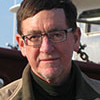New York Gov. Andrew Cuomo’s move to pull the plug on the Port Ambrose offshore liquefied natural gas terminal could be a harbinger for zoning the ocean – divvying up sectors of the nearshore Exclusive Economic Zone, much in the way urban planners set aside land uses.
The preferred term among professionals is “marine spatial planning,” touted by the National Oceanic and Atmospheric Administration as “a science-based tool that regions can use to address specific ocean management challenges and advance their goals for economic development and conservation.”
Zoning has been used in limited circumstances – such as no-fishing marine sanctuaries, or rules against anchoring on coral reefs. Spatial planning got its big boost early in the Obama administration, with the creation of an interagency ocean policy task force, with recommendations that included spatial planning.
It was of a piece with the administration’s early optimism for developing East Coast offshore industry, when in April 2009 then-Interior Secretary Ken Salazar breezily predicted offshore wind could easily supplant coal as a major supply to the national grid.
As it turned out, cheap and plentiful natural gas did that to coal, and it is having some effect in delaying wind development in the East. But wind policy advocates like professor Jeremy Firestone at the University of Delaware say wind development can move forward and be more competitive, given regulatory, tax, finance and policy changes.
“Electricity markets are different than oil and gas, it’s like trying to put a square peg in a round hole,” Firestone says.
But like proposals for LNG ports, the wind industry will need to co-exist with other users. The Bureau of Ocean Energy Management last week got lease deals for 344,000 acres of potential wind farms off New Jersey. Jim Bennett, the agency’s director for renewable resources, says they will continue to work with maritime stakeholders on where turbines and transmission lines should be located.
BOEM plans for leasing off New York’s shores got a rocky reception at two public listening sessions on Long Island. Commercial fishermen say the agency has a lot more homework to do.
“This is the worst possible area…It’s between two of the busiest shipping lanes in the nation,” said Meghan Lapp, who handles government relations for seafood processor Seafreeze Ltd., North Kingston, R.I.
BOEM’s early economic analysis grossly underestimated fishing revenue from the proposed lease areas, and there would be additional safety issues from squid boats hauling to close to the New York-bound separation lane, Lapp said.
Other maritime interests are following BOEM’s process, and starting to take notice in places like offshore Maryland, where more than 100 turbines could be in the works.
In the new December issue of WorkBoat, correspondent Pamela Glass takes a look at the progress of wind energy, and ends with a caution from Jennifer Carpenter, executive vice president of American Waterways Operators (AWO). Even when turbines are sited outside of the major shipping lanes, they could constrict “critical near-shore navigation corridors,” and force vessels to transit farther offshore – with all the attendant additional risk in bad weather, Carpenter said.



